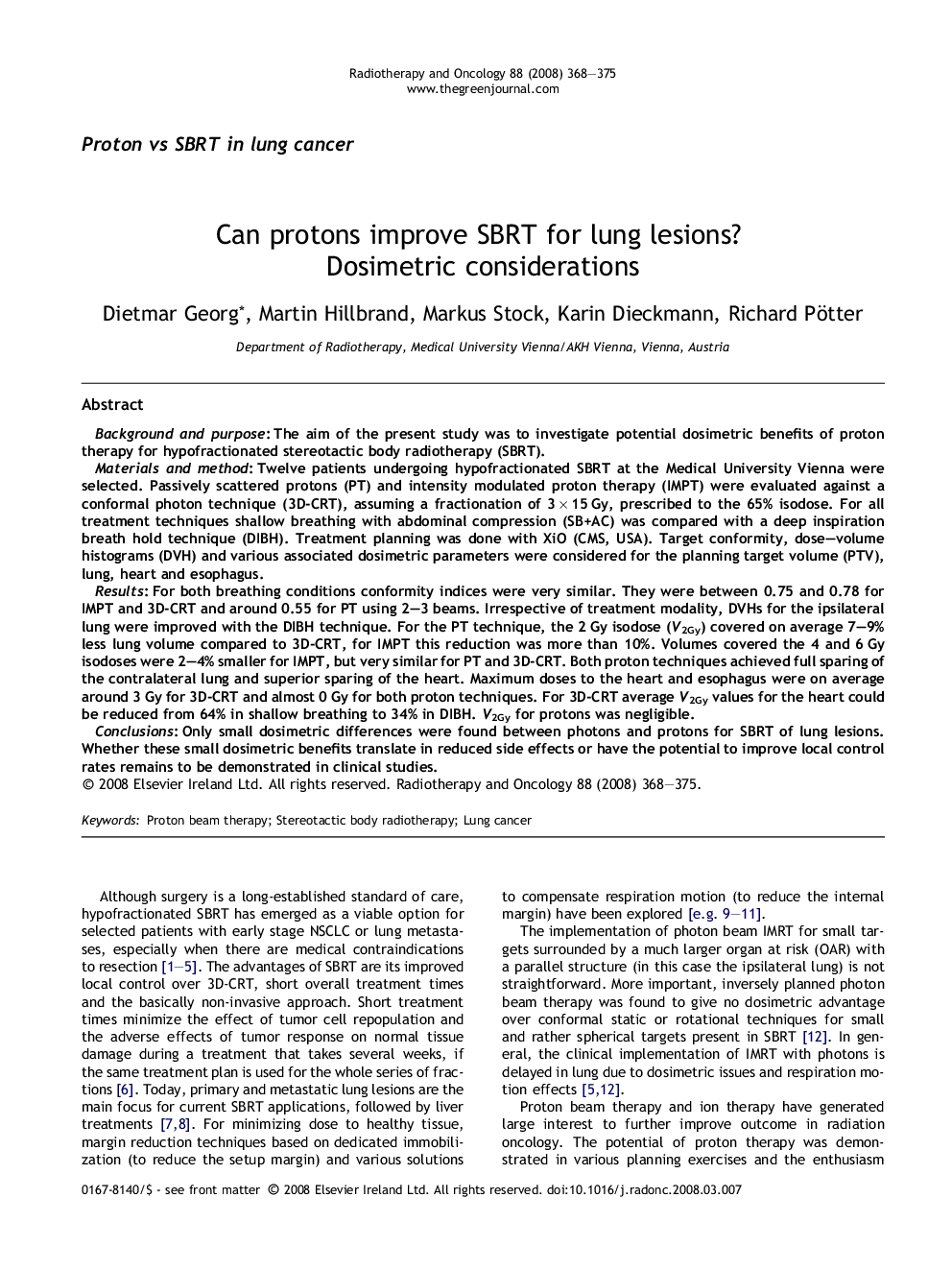| کد مقاله | کد نشریه | سال انتشار | مقاله انگلیسی | نسخه تمام متن |
|---|---|---|---|---|
| 2160462 | 1090883 | 2008 | 8 صفحه PDF | دانلود رایگان |

Background and purposeThe aim of the present study was to investigate potential dosimetric benefits of proton therapy for hypofractionated stereotactic body radiotherapy (SBRT).Materials and methodTwelve patients undergoing hypofractionated SBRT at the Medical University Vienna were selected. Passively scattered protons (PT) and intensity modulated proton therapy (IMPT) were evaluated against a conformal photon technique (3D-CRT), assuming a fractionation of 3 × 15 Gy, prescribed to the 65% isodose. For all treatment techniques shallow breathing with abdominal compression (SB+AC) was compared with a deep inspiration breath hold technique (DIBH). Treatment planning was done with XiO (CMS, USA). Target conformity, dose–volume histograms (DVH) and various associated dosimetric parameters were considered for the planning target volume (PTV), lung, heart and esophagus.ResultsFor both breathing conditions conformity indices were very similar. They were between 0.75 and 0.78 for IMPT and 3D-CRT and around 0.55 for PT using 2–3 beams. Irrespective of treatment modality, DVHs for the ipsilateral lung were improved with the DIBH technique. For the PT technique, the 2 Gy isodose (V2Gy) covered on average 7–9% less lung volume compared to 3D-CRT, for IMPT this reduction was more than 10%. Volumes covered the 4 and 6 Gy isodoses were 2–4% smaller for IMPT, but very similar for PT and 3D-CRT. Both proton techniques achieved full sparing of the contralateral lung and superior sparing of the heart. Maximum doses to the heart and esophagus were on average around 3 Gy for 3D-CRT and almost 0 Gy for both proton techniques. For 3D-CRT average V2Gy values for the heart could be reduced from 64% in shallow breathing to 34% in DIBH. V2Gy for protons was negligible.ConclusionsOnly small dosimetric differences were found between photons and protons for SBRT of lung lesions. Whether these small dosimetric benefits translate in reduced side effects or have the potential to improve local control rates remains to be demonstrated in clinical studies.
Journal: Radiotherapy and Oncology - Volume 88, Issue 3, September 2008, Pages 368–375